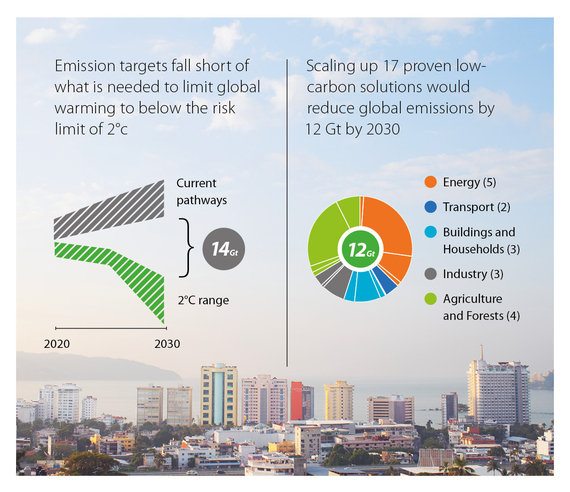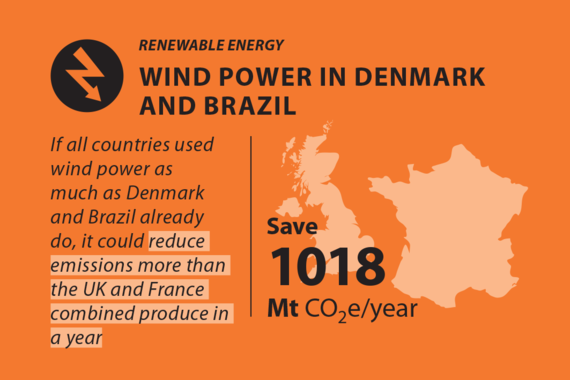Cutting carbon pollution is going to hurt the economy and require new technology we can hardly even imagine. Or is it really? A fresh study, Green to Scale, shows that climate action may be easier and more attractive than most people assume.
The Finnish Innovation Fund Sitra teamed up with leading institutions from 10 different countries to answer a simple question. We wanted to know how much emissions the world can reduce just by scaling up proven low-carbon solutions to comparable countries.
What makes the study unique is the novel approach: the solutions were applied only to the extent that has been achieved somewhere today. Surely comparable countries can reach in 15 years the level some nations have already.
The results are quite striking - and give us hope. Just scaling up a selection of 17 proven solutions would reduce global emissions by a quarter compared with today's levels.
For each solution - from reducing deforestation to improving energy efficiency in industries - we identified leading countries that already have concrete results to show. Not surprisingly, three cases come from Nordic countries - those feisty little nations working hard to go green.
Reaching by 2030 the same relative level in wind power Denmark already has today would cut global emissions more than the UK and France produce combined. Using the Finnish lesson in biomass for heating would result in savings equal to the annual emissions of Bangladesh. The Danes score another point in leading on cutting food waste - a case that, if scaled up, would reduce emissions more than the Netherlands produces every year.
If you are reading this in Sweden, Norway or Iceland, you need not worry. We only analyzed 17 possible solutions, but a longer list would have surely included contributions from other Nordic countries as well.
Learning from successes works both ways. Nordic countries could benefit from looking at the experience of Germany in building solar power, for example. We can make the transition to low-carbon economies smoother by learning from each other.
The report shows that we do not need to wait for miracle technologies. As a fan of new technology, I am looking forward to seeing more effective batteries, lab meat and transparent solar cells. But while smart people are working hard to bring these innovations to the market, we can and should take stronger climate action with what we already have.
Using pessimistic assumptions the total cost of scaling up the solutions would reach $94 billion dollars a year by 2030. That is a bargain for saving the world from climate disaster. Taking the average of the likely cost range, cutting emissions with this set of solutions could actually save the world money.
Every economist is going to tell you that there are no twenty dollar bills waiting for someone to pick them up. If low-carbon solutions really were that attractive, they would already be implemented at scale, right?
In real life climate-smart solutions do not get the uptake they deserve because several barriers keep holding them back. For example, people making policy and investment decisions may not know all the solutions available, let alone all their benefits.
Poor countries lack the financing to pay for the upfront investments - even if they save money over time. The cards are stacked against low-carbon solutions as long as we spend more than half a trillion dollars of taxpayers' money every year on direct subsidies to polluting fossil fuels.
These and other barriers are real. Which brings me back to the new report. Case studies from Colombia to Denmark and from Finland to China show that barriers can be removed.
We have the solutions to cut global emissions significantly. They come at an affordable cost. We just need the leadership and commitment to remove barriers and implement the solutions - to bring green to scale.
So what are we waiting for?
This post is part of a "Nordic Solutions" series produced by The Huffington Post, in conjunction with the U.N.'s 21st Conference of the Parties (COP21) in Paris (Nov. 30-Dec. 11), aka the climate-change conference. The series will put a spotlight on climate solutions from the five Nordic countries, and is part of our What's Working editorial initiative. To view the entire series, visit here.
Follow Finnish Innovation Fund Sitra on Twitter: www.twitter.com/SitraFund


